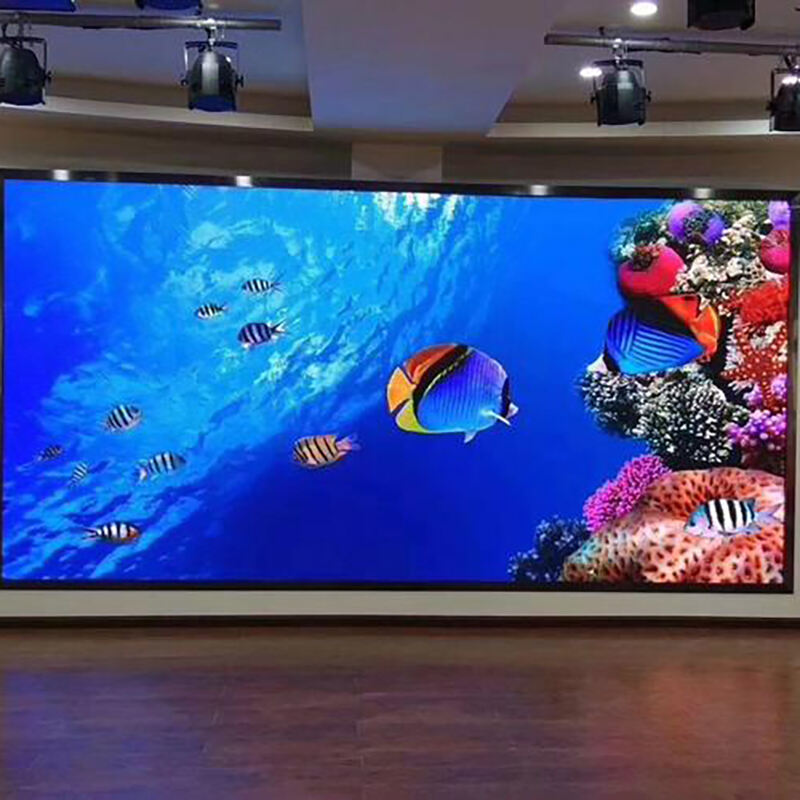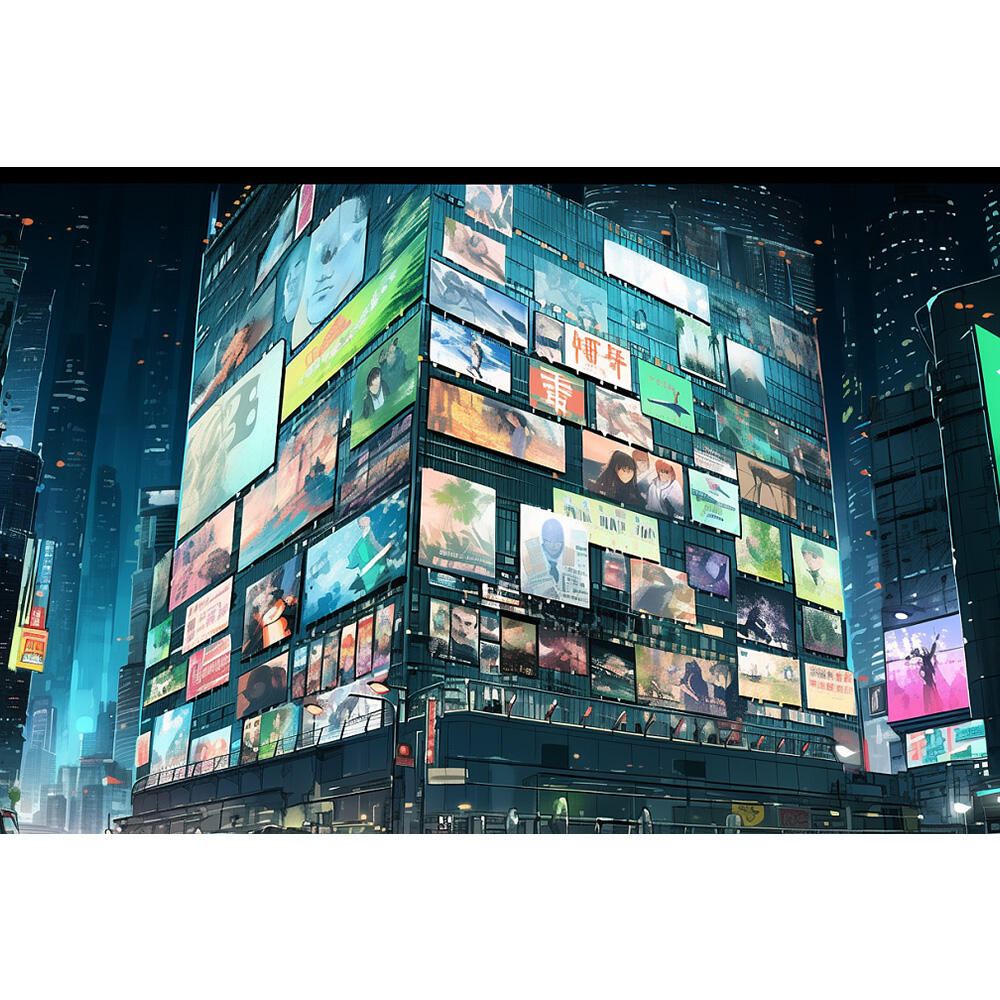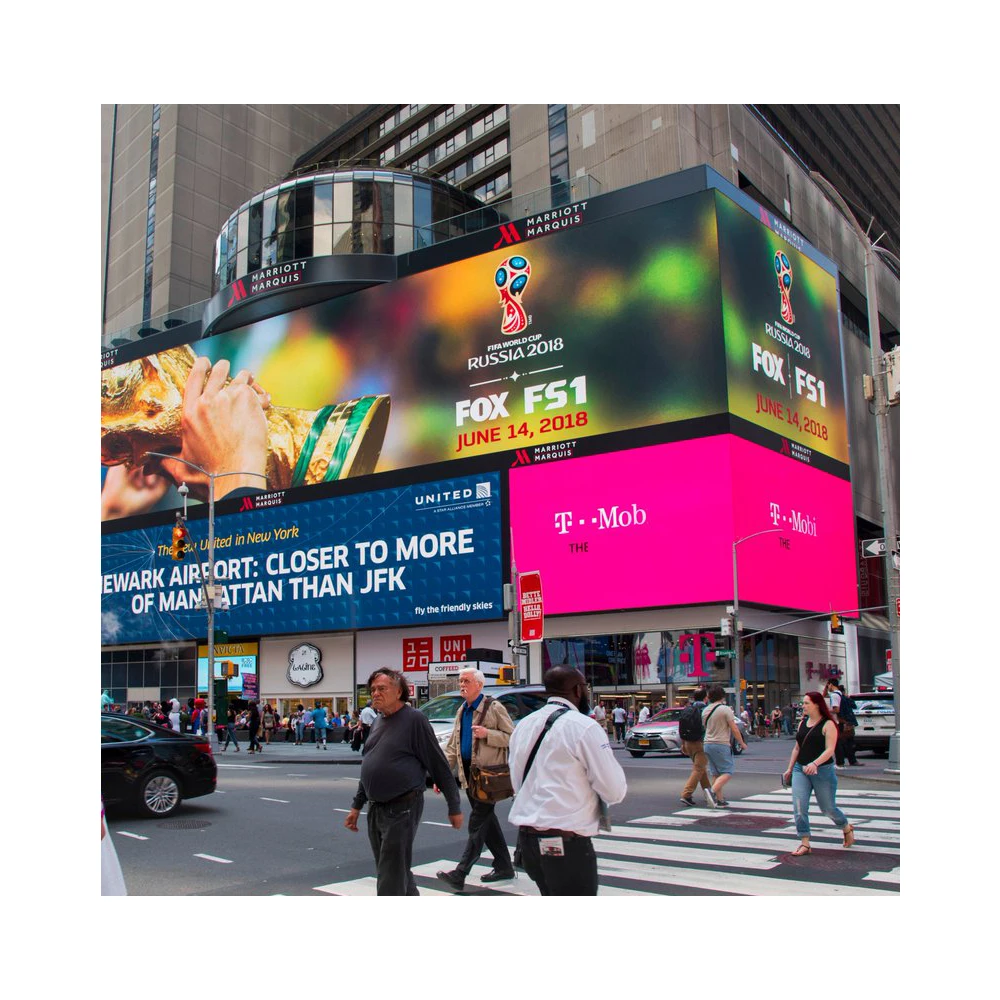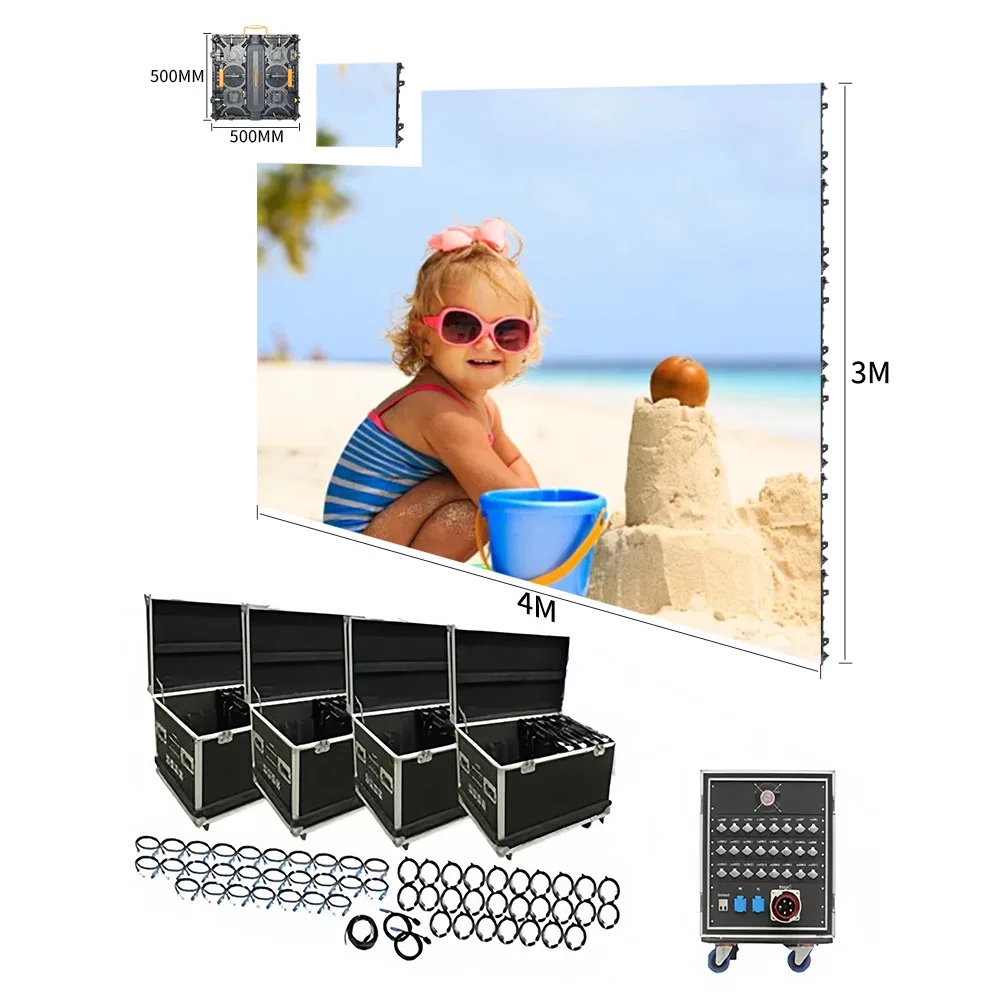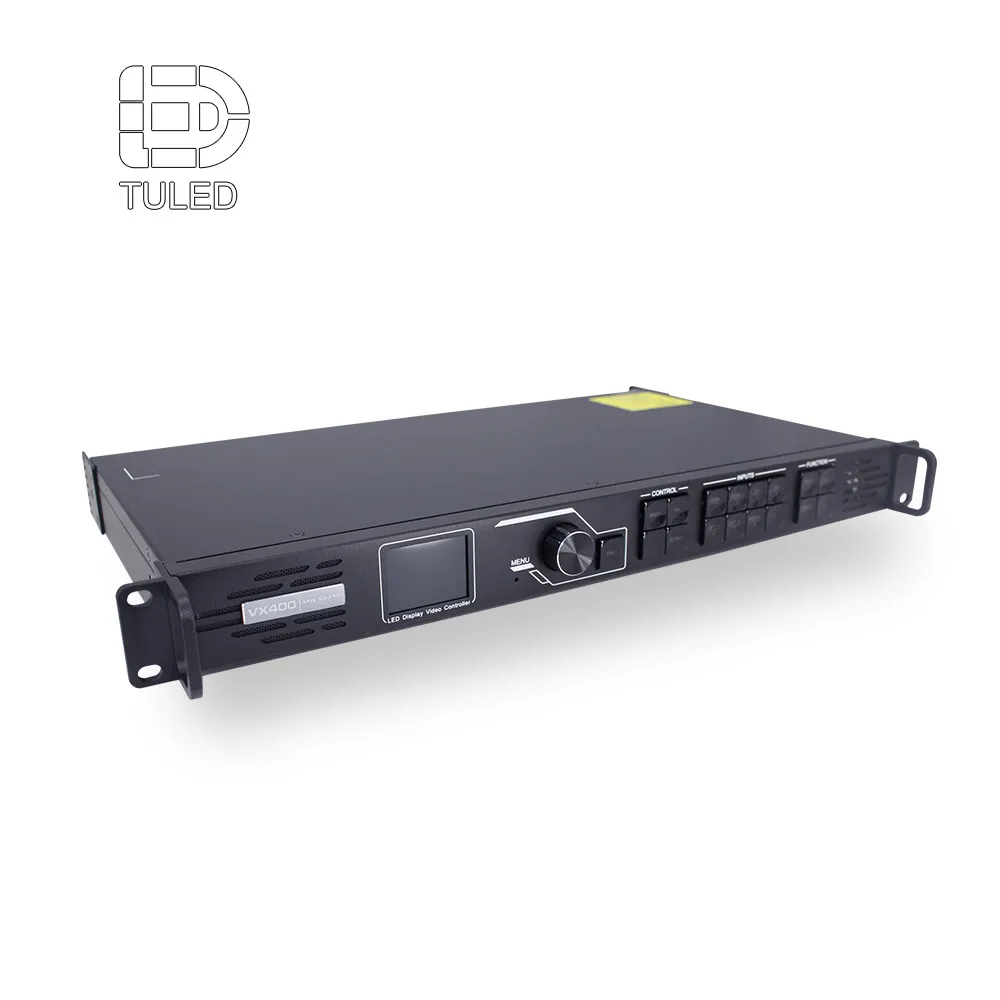LED kijelzők alapjainak megértése: cél, környezet és alapvető specifikációk
Hogyan válasszon a saját igényeihez leginkább illő LED kijelzőt
Először is tisztázni kell, pontosan mit kell tennie a kijelzőnek. Belső térbe szánt kijelzőről van szó, például irodaházakban használt képernyőkről, vagy esetleg nagyobb méretű kültéri megoldásról, ahol egész nap járókelők haladnak el? Beltéri elrendezésnél nagyon fontos a színek minősége és az, hogy a nézők különböző szögekből is jól lássák a tartalmat. A legtöbb beltéri kijelzőnek legalább 160 fokos látószög lefedettséggel kell rendelkeznie. Kültéri táblák esetén azonban teljesen más a helyzet. A házolásnak ellenállónak kell lennie az esőnek és a szélnek, a kijelzőnek pedig komoly fényerőre van szüksége – körülbelül 5000 nít vagy annál több –, hogy a szöveg akkor is jól látható maradjon, amikor erősen süt a nap. A nagy nevű vállalatok az elmúlt időben intenzíven dolgoztak ezen a területen. Újabb modelljeik működési ideje jól meghaladja a 100 ezer órát, ami évekig tartó üzemeltetést jelent cserék nélkül. Emellett energiahatékonyabbak a régebbi technológiáknál, és iparági beszámolók szerint körülbelül negyven százalékkal csökkentik az energiafogyasztást.
A LED-kijelző kiválasztásának elsődleges szempontjai: felbontás, fényerő és nézési távolság
Három műszaki specifikáció határozza meg a kijelző teljesítményét:
| Gyár | Belsejárványos használat | Kültéri használat |
|---|---|---|
| Fényerő | 800—1500 nits | 5000—10000 nits |
| Pixel távolság | 1,2—4 mm | 4—20 mm |
| Látótávolság | 3—10 méter | 20—100 méter |
Például egy 2,5 mm-es pixeltávolságú kijelző éles képet biztosít akár 8 méteres távolságig is – ideális üzletekben – míg egy 10 mm-es pixeltávolságú kijelző stadionokhoz illik, ahol a nézők több mint 50 méterre vannak. A környezetnek megfelelően optimalizált kijelzők az ötéves időszak alatt 35%-kal csökkentik a karbantartási költségeket.
A méret, környezet és pixeltávolság szerepe a kijelző teljesítményében
A kijelző mérete közvetlen hatással van a telepítési rugalmasságra és a tartalom láthatóságára. Egy 5 négyzetméteres beltéri képernyő, 1,9 mm-es pixeltávolsággal részletgazdag termékismertetést tud bemutatni, míg egy 50 négyzetméteres kültéri kijelző, 16 mm-es pixeltávolsággal uralkodik a autópálya menti reklámok felett. A környezeti tényezők határozzák meg az anyagválasztást:
- Kültéri : IP65-ös vízállósági besorolású, csillogásmentes bevonatok és korrózióálló alumínium házak
- Belső : Vékony keretek (3,5 mm) zökkenőmentes videofalakhoz, alacsony zajszintű hűtőrendszerek
Nagy forgalmú területeken, mint például közlekedési csomópontokban, érdemes redundáns tápegységeket és elől hozzáférhető karbantartási lehetőséget választani. A szakmai vezetők ajánlják a gyártókkal történő konzultációt helyszíni felmérések során, hogy a technikai specifikációk összhangban legyenek a költségvetéssel és a rendelkezésre álló térrel.
Pixeltávolság és képminőség: Felbontás illesztése a megfigyelési távolsághoz
Pixeltávolság és hatása a kijelző felbontására és megfigyelési távolságára
A pixel távolság alapvetően azt jelenti, milyen messze vannak egymástól az apró LED-klaszterek, és ez a távolság hatással van a képminőségre, valamint arra, honnan kell nézniük a szemlélőknek, hogy tisztán lássák a képet. Amikor kisebb távolságokról beszélünk, például P1.2-től P3-ig, akkor ezek a kijelzők lényegesen több LED-et helyeznek el ugyanakkora térben, így sokkal élesebb képet biztosítanak közvetlen közelből, ami ideális például hotel előcsarnokokban vagy bolti kirakatokban. Ezzel szemben a nagyobb távolságok, P6-tól P10-ig, kedvezőbb ár-megjelenést kínálnak, miközben további távolságból is jól láthatók, így kiváló választások például nagy kivetítőként kültéri hirdetőtáblákon vagy sportarénák hatalmas kijelzőin.
Egy fontos iparági irányelv szerint a pixel távolságot (milliméterben) 1,5-tel kell megszorozni, hogy becsülhető legyen a minimálisan ajánlott nézőtávolság méterben. Például egy P4-es kijelző teljesítménye a legjobb legalább 6 méter távolságból ahhoz, hogy elkerülhető legyen a pixelek láthatósága.
Hogyan befolyásolja a pixel távolság a kép élességét és tisztaságát
A kisebb pixeltávolság csökkenti a „képernyőajtó-hatást”, amikor a pixelek közötti rések közelről észrevehetővé válnak – kritikus fontosságú szövegintenzív alkalmazásoknál, mint például irányítóközpontok vagy digitális kijelzők. Azonban az extrém finom pixeltávolság (
| Pixel távolság | Optimális látótávolság | Általános felhasználási esetek |
|---|---|---|
| P1,5—P2,5 | 2—4 méter | Konferenciatermek, üzleti kioszkok |
| P3—P6 | 5—10 méter | Színpadi háttérképek, közlekedési csomópontok |
| P8—P10 | 15+ méter | Stadionok, autópálya-reklámok |
Az optimális nézőtávolság kiszámítása a pixeltávolság alapján
Használja ezt a képletet a felbontás és a közönség közelségének összeegyeztetéséhez:
Minimális nézőtávolság (méter) = Pixeltávolság (mm) × 1,5
P3-as kijelző esetén:
3 mm × 1,5 = 4,5 méter minimális távolság
A magas felbontású tartalmak, például a 4K videók jobban profitálnak a szűkebb pixeltávolságból, ahogyan azt a nézőtávolság-optimalizálással kapcsolatos kutatások is támasztják alá.
Esettanulmány: Pixeltávolság kiválasztása beltéri vállalati előtérhez vs. kültéri hirdetőtáblához
A technológiai cég egy P2.5-ös kijelzőt szerelt be előcsarnokába, ahol az emberek általában körülbelül két méterre állnak, hogy közelről megtekintsék a termékeket. Eközben, pár száz méterrel arrébb egy hirdetőtársaság egy jóval nagyobb, P10-es kijelzőt választott, mivel a járművezetők sokkal nagyobb távolságból, néha huszonöt méternél is többről haladnak el mellette. Számukra nem az éles részletek voltak a fontosak, hanem az, hogy a hirdetések sebesség közben is jól láthatók legyenek. A megoldás jól bevált számukra is: az üzlet évente körülbelül 740 ezer dollárral növelte bevételeit csupán a jobb láthatóság miatt. Ezek a gyakorlati példák mutatják, mennyire fontos, hogy a kijelző mérete illeszkedjen ahhoz a távolsághoz, ahonnan az emberek általában megnézik – ez teszi ki az igazi különbséget, ha a marketingbe fektetett pénzből a lehető legtöbbet akarjuk kihozni.
Beltéri és kültéri LED kijelzők: környezeti és műszaki követelmények
LED kijelzők besorolása környezet szerint: beltéri és kültéri alkalmazások
Amikor LED kijelzőkről van szó, általában két fő típus létezik attól függően, hogy hol kerülnek felhasználásra: beltéri terekre szántak és kültéri telepítésre készültek. A beltéri változatok kiemelkednek a színeknél, mintegy 95% vagy annál többet fedve le az NTSC színtartományból, ami részletgazdag munkákhoz teszi őket ideálissá. Emellett a pixelek közötti távolságuk általában 1,5 mm és 4 mm között van, így a nézők akkor is jól láthatják az összes részletet, ha közel ülnek a képernyőhöz egy jól megvilágított helyiségben. A kültéri LED kijelzők viszont másképp vannak kialakítva. Ezek a darabok kemény időjárási körülményeket is el kell bírjanak, ezért az előállítók extra erős szerkezettel, nagyobb méretekkel és olyan merev kerettel gyártják őket, amely akár 60 mérföld/órás széllökéseket is kibír anélkül, hogy meghibásodnának. A legtöbb beltéri modell ráadásul elég vékony is, általában kevesebb, mint 100 mm mély, így könnyen felszerelhetők falra vagy mennyezetre anélkül, hogy sok helyet foglalnának.
A beltéri és kültéri LED kijelzők fényerősség-igényei
A fényerő igények jelentősen különböznek a különböző környezetekben:
| Specifikáció | Belső LED kijelzők | Kültéri led kijelzők |
|---|---|---|
| Tipikus fényerő | 800–1500 nits | 5000–10000+ nits |
| Fényviszonyoktól | Stabil, mesterséges | Közvetlen napsugárzás |
| Energiafogyasztás | 300–500 W/m² | 800–1200 W/m² |
A beltéri egységek megőrzik az élességet csillogás nélkül irodákban vagy bevásárlóközpontokban, míg a kültéri képernyők a környezeti fény ellen küzdenek – meghaladva a közvetlen napsugárzás intenzitását (100 000 lux) –, hogy megakadályozzák a tartalom elmosódását.
Időjárásállóság, IP besorolások és szerkezeti tartósság kültéri használatra
A kültéri LED kijelzőknek por- és vízsugarakkal szembeni IP65-ös védelmet kell biztosítaniuk, tengeri minőségű modellek esetén pedig akár IP68-as besorolásig is elérhetik a bemerítési ellenállást. A tartósság kulcsfontosságú jellemzői:
- Korrózióálló alumíniumötvözetek (6063-T5 osztály)
- UV-álló polikarbonát rétegek, amelyek megakadályozzák a színelváltozást, öt év alatt több mint 90%-kal
- Aktív hűtési rendszerek -30°C-tól +50°C-ig terjedő működés támogatásával
Szerkezeti megerősítések, például kereszttámasztott acélkeretek (3–5 mm vastagság), amelyek biztosítják az állóságot szeizmikus zónákban, míg beltéri modellek könnyű alumínium kompozitokat használnak (1,2–2 mm). Ezek a különbségek eredményezik, hogy a kültéri kijelzők súlya területegységre vetítve 35–50%-kal magasabb.
LED Kijelzőtechnológiák: SMD, DIP, COB, GOB és Új Tendenciák
LED Kijelzők Technológia Szerint: SMD, DIP, COB, GOB, MicroLED és Mini LED
Manapság az LED-kijelzők számos különböző kivitelben érhetők el attól függően, hogy mire használják őket. Vegyük például az SMD-t, a felületre szerelt eszközöket, amelyek kiválóan működnek beltéren, ahol nagyon éles képeket szeretnénk. Aztán ott van a DIP technológia, azaz a kettős soros tok, amely jobban bírja a kültéri körülményeket, így alkalmasabb a nagy kinti hirdetőtáblákhoz, mivel robosztusabb felépítésű. Egyre több új fejlesztés is megjelenik. A COB technológia az aktuális LED-chipeket közvetlenül a nyomtatott áramkörre helyezi, így hosszabb élettartamúvá és kevésbé hibásodóvá teszi azokat. Ugyanez igaz a GOB-ra, ahol ragasztót használnak minden alkatrész rögzítésére. Ha pedig a jövőről beszélünk, a MicroLED és a Mini LED jelenleg komoly figyelmet kap. Ezek a technológiák akár egy milliméternél kisebb pixeltávolságra is képesek, ami azt jelenti, hogy a vállalkozások probléma nélkül telepíthetnek 8K tartalmat kezelni tudó kijelzőket. Már most is láthatunk néhány lenyűgöző megoldást bevásárlóközpontokban és repülőtereken, ahol ezen haladó lehetőségeket alkalmazzák.
SMD és DIP LED-technológiák összehasonlítása különböző felhasználási esetekben
| Gyár | SMD | DIP |
|---|---|---|
| Pixel sűrűsége | 1,5 mm-es lépték részletgazdag képekhez | ≥5 mm-es lépték távolsági használatra |
| Hosszútartamú használhatóság | Törékeny forrasztott kapcsolatok | Időjárásálló bevonat |
| Fényerő | 800–1500 nits (beltéri) | 5000–8000 nits (külső tér) |
Konferenciatermekben és kiskereskedelmi környezetekben az éles képekért az SMD-t részesítik előnyben, míg a kemény körülményeknek kitett autópályákon és stadionokon a DIP maradt az ipari szabvány.
COB és GOB előnyei magas megbízhatóságú környezetekben
A COB technológia közvetlenül a vezetőlapra szereli az LED-chipeket. Ez a megközelítés megszünteti azokat a sebezhető forrasztási pontokat, amelyek hajlamosak könnyen meghibásodni. Olyan rendszerekről beszélünk, amelyeknél a meghibásodási arány körülbelül 40%-kal csökken, ha olyan helyeken használják őket, ahol állandó probléma a páratartalom, például irányítótermekben. Azután ott van a GOB, amely tovább lép egy extra védő epoxi réteggel. Az eredmény? Por elleni védelem szempontjából IP65-ös besorolású berendezések, amelyek tökéletesek gyártóüzemi terekhez vagy azokhoz a kültéri digitális kioszkokhoz, amelyek egész nap esőnek és kosznak vannak kitéve. Ami igazán lenyűgöző, hogy mindkét technológia képes 1,2 mm-nél kisebb pixeltávolság kezelésére, miközben jelentősen hosszabb ideig tart, mint a hagyományos megoldások. A vállalkozások számára, amelyek a hosszú távú költségeket vizsgálják, ez kevesebb cserét és kevesebb leállási időt jelent az idők során.
Jövőkép: A MicroLED elterjedési tendenciái kereskedelmi terekben
A MicroLED elterjedése vállalati előcsarnokokban és luxusiskerletekben 200%-kal nőhet 2026-ig, amit a zökkenőmentes 4K/8K átmenetek és a moduláris skálázhatóság hajt. Önmagát kibocsátó pixelei kiváló fényesség-egyenletességet biztosítanak (95% NTSC színtartomány), felülmúlva az LCD és OLED technológiákat – ideálissá téve ezáltal a lenyűgöző hatású igazgatói termeket és az élményalapú marketinget.
Hol vásárolhatók LED kijelzők: Megbízható beszállítók, márkák és beszerzési stratégiák
Hol vásárolhatók LED kijelzők: Megbízható beszállítók és értékesítési csatornák
A jó beszállítók általában AV integrátorokon keresztül működnek, közvetlenül a gyártóval együttműködve, vagy hitelesített viszonteladókkal állnak kapcsolatban, akik értenek a szakmához. Amikor körülnéz, mindig ellenőrizze, rendelkeznek-e ISO 9001 minősítéssel. A kültéri telepítések külön figyelmet igényelnek, ezért ügyeljen arra, hogy megfeleljenek például az IP65 védettségi fokozatnak az időjárás elleni védelem tekintetében. Ne csak a szavukra hagyatkozzon – kérjen valós esettanulmányokat hasonló korábbi alkalmazásokból. Építési áruházak digitális kijelzőt szeretnének? Irodák előcsarnoki kijelzőket igényelnek? Rendezvényszervezők ideiglenes megoldásokat kérnek? A legjobb cégek valós példákkal rendelkeznek mindezen területeken. És beszéljünk a támogatásról: amikor 3 órakor probléma adódik egy fontos rendezvény előkészületei során. A vezető forgalmazók általában folyamatos műszaki segítséget nyújtanak, valamint rugalmas rendszereket, amelyek a jövőben a vállalkozás növekedésével együtt bővíthetők.
Vezető márkák az LED kijelző piacon
A legjobb gyártók kiemelkednek az innovációval, például csillogásmentes bevonatokkal a napsütésben jól olvasható kültéri képernyőkért vagy extrém finom pixeltávolsággal (<1,2 mm) közeli megtekintéshez szükséges beltéri alkalmazásokhoz. Bár a regionális szolgáltatás eltérő lehet, a legmegbízhatóbb márkák 10 éves fényerőgaranciát biztosítanak, és megőrzik a leállított modellek pótalkatrészeinek készletét.
A szállítóktól származó garancia, támogatás és utánvásárlási szolgáltatás értékelése
Keressen olyan garanciákat, amelyek legalább 80%-os fényerő-megőrzést garantálnak három év alatt, valamint egyértelmű politikát a holt pixelek cseréjére vonatkozóan. A vezető szolgáltatók minősített technikusokat küldenek kalibrálásra, 72 órán belül a problémák bejelentését követően – elengedhetetlen fontosságú ez missziósan kritikus környezetekben, mint a műsorszóró stúdiók vagy vészhelyzeti irányítóközpontok.
Stratégia: Az ár, minőség és skálázhatóság egyensúlyozása nagy mennyiségű beszerzésekor
Tömegrendelések esetén, amelyek meghaladják az 50 m²-t, tárgyaljon mennyiségi kedvezményeket, miközben biztosítja a pixelek egységes eloszlását az egyes tételen belül. A moduláris tervezés lehetővé teszi a fokozatos fejlesztést, ami 18–22%-kal csökkenti a kezdeti beruházási költségeket az egyedi, monolitikus megoldásokhoz képest. Ellenőrizze a beszállítók állításait független laboratóriumi jelentésekkel, amelyek a színpontosságot (ΔE ≤3) és az átlagos hibamentes működési időt (MTBF) mérik, utóbbinak 50 000 órát kell meghaladnia.
GYIK
Mi a fő különbség a beltéri és a kültéri LED-kijelzők között?
A beltéri LED-kijelzők a színpontosságra és a részletes képre helyezik a hangsúlyt, tipikusan 1,5 mm és 4 mm közötti pixeltávolsággal, jól megvilágított környezetekhez alkalmazkodva. A kültéri kijelzők durva időjárási viszonyok elleni ellenállásra épülnek, és magasabb fényerőt igényelnek (5000–10 000+ nits), hogy nappali napfényben is láthatóak legyenek.
Hogyan válasszam ki a megfelelő pixeltávolságot az LED-kijelzőm számára?
A megfelelő pixel távolság kiválasztásához figyelembe kell venni a nézőtávolságot. Kisebb pixel távolság, például P1,5–P2,5 ideális közelről történő megtekintéshez, például konferenciatermekben. Nagyobb pixel távolságok, mint például P8–P10, hosszabb távolságból való láthatóságra alkalmasak, például stadionokban vagy autópálya-reklámtáblákon.
Milyen előnyei vannak az SMD technológia használatának LED kijelzők esetében?
Az SMD (felületre szerelhető eszköz) technológia magas pixelsűrűséget biztosít, így ideális részletes és éles képet igénylő környezetekhez, például beltéri konferenciatermekhez vagy kiskereskedelmi helyiségekhez.
Miért érdemes MicroLED-et választanom kereskedelmi alkalmazásokhoz?
A MicroLED kiváló fényerő-egyenletességet és zavarmentes 4K/8K átmeneteket kínál, így ideális lenyűgöző élményt nyújtó megoldás vállalati előcsarnokokban vagy luxus kiskereskedelmi térben. Emellett méretezhetőbb és energiatudatosabb, mint a hagyományos LED kijelzők.
Mire kell figyelnem egy LED kijelző szállítójánál?
Szállító kiválasztásakor ellenőrizze az ISO 9001 minősítést, a kültéri kijelzőkhez szükséges időjárás-állósági szabványokat, például az IP65-öt, valamint hasonló projektek esettanulmányait. Egy jó szállítónak erős műszaki támogatást és skálázható megoldásokat is nyújtania kell.


